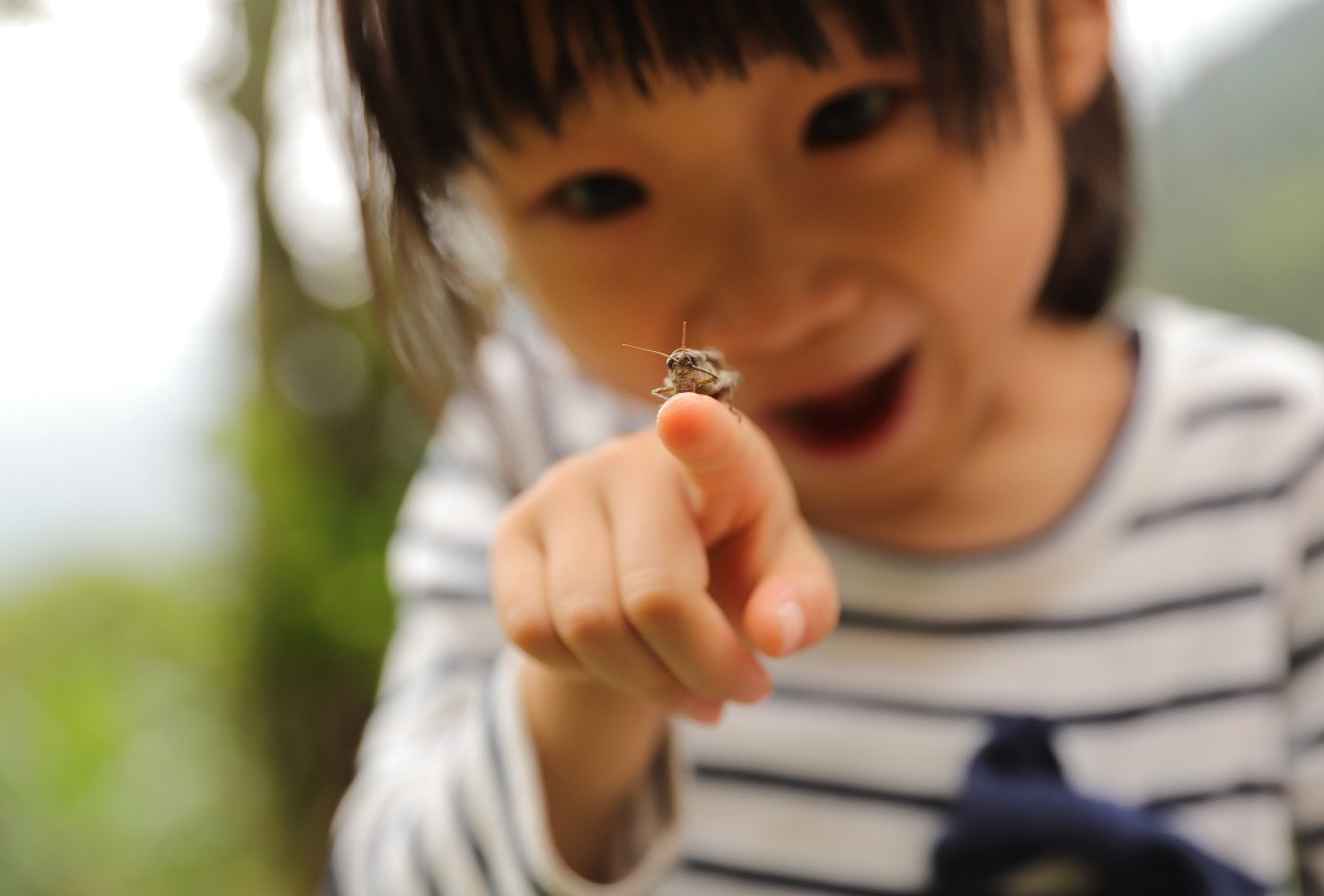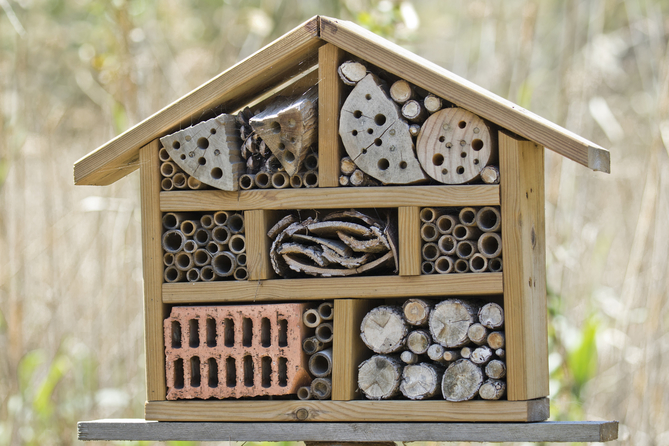
Overview
Get your students thinking about ways to care for the environment and how we use our energy. Students can put energy-saving actions into practice by unplugging the classroom and heading outside for a game of "Bug catcher". Because insects are vital to our environment, we construct a special hotel for bugs to provide a much needed habitat for our critter friends.
Instructions
What you'll need
- "Power down" slideshow (French version available)
- "Bug catcher" templates
- Shoebox hotel supplies collected by students in advance:
- Shoe boxes
- Paper towel rolls
- Newspapers
- Cardboard egg cartons
- Sticks
- Dry leaves
- Other biodegradable products
- Markers (optional)
How can we save energy?
- Pull up the "Power down" slideshow to share easy ways we can use less energy.
- For slides 8-10, ask students which option is better for the environment and discuss why.
- The last few slides look at “people-powered energy”, which we all have in us to use.
Bug catcher tag
- With your cut out copies of the "Bug catcher" templates, get students ready to go outside for a game of Bug catcher tag. Before you head out, ask students to help “power down” the classroom by turning off the lights and electronics.
- Once outside, tell students they are bugs and their job is to stay away from the bug catcher. If tagged by a bug catcher, students will freeze and wait for a chipmunk to free them so they can run from the bug catcher again.
- Pick two students to be bug catchers (each holding a net template) and two students to be chipmunks (each holding a chipmunk template).
- Divide the rest of the students into two groups and label one group butterflies and one group grasshoppers. How would they move around the playground as their insect?
- Stop the game after 5 minutes and switch roles.
Shoebox hotel

- While outdoors, discuss that bugs like to live in bark, holes in dead wood, and piles of fallen leaves. But, since lots of gardeners tidy away the stuff where invertebrates might live, some bugs might lose their home. Let’s build a hotel for them using our supplies.
- In small groups, have students discuss and design an insect hotel.
- Have students use the shoebox and their other biodegradable materials to create a home for the bugs.
- Put some finishing touches to the hotel by decorating the outside using markers and other art supplies.
- Ask students to place the hotel outside the school or at home.
- Have students check back and see who has moved in.
Modify or extend this activity
- As a class, discuss the importance of bees in our world. Have the students check out National Geographic 10 facts about honey bees and make posters to raise awareness.
- Take action and as a class, raise money and become a member of the Canadian Honey Council to help save our bees.
Curriculum Fit
Our activities provide a link to the core competencies of the curriculum. The activities engage students in sharing ideas and solutions, using their energy for play, and exploring and caring for the environment through creative thinking, design and building.
Core competencies:
Communications
- Connect and engage with others (to share and develop ideas)
- Collaborate to plan, carry out, and review constructions and activities
Thinking
- Creative thinking: novelty and value
- Critical thinking: develop and design
Social responsibility
- Contributing to community and caring for the environment
The activities also connect to a variety of grade-specific curricular competencies and content in a variety of subjects including Physical and Health Education, Science, Social Studies and English Language Arts.
Assessments
- Assess students’ ability to share ideas, listen to each other and take action.
- Assess students’ participation in outdoor play and cooperation with others.
- Assess students’ creativity and understanding of insect habitat.
Teaching Notes
Conservation is BC Hydro’s message
BC Hydro uses the power of falling water to create clean, reliable electricity. Water turns turbines that drive generators to produce our electricity. After use, water continues its path through the natural water cycle. There is value in teaching B.C. youth about the important role water plays in this province.
Check out these Tips and technologies for more ways to save electricity.
Plastic pollution background
Over 12% of our waste is plastic, which spells problems for our oceans and wildlife. Check out this National Geographic Kids article on plastic pollution to read tips on how to reduce our plastic waste and understand the issues with disposable plastic water bottles.
Young people can take action
Young people are the energy of our future. We can empower them using simple concepts of getting outside to play and encouraging them to explore, create and protect our environment.






